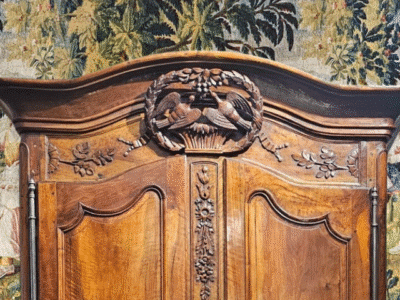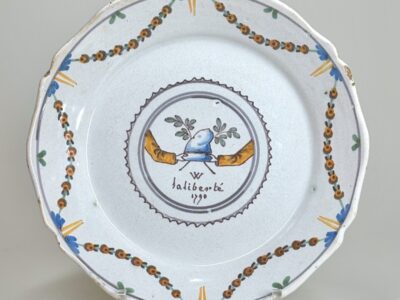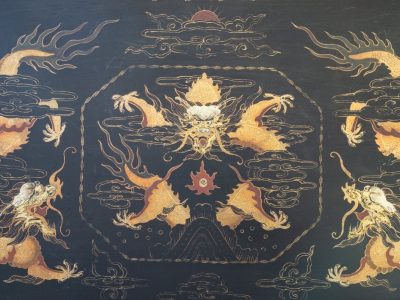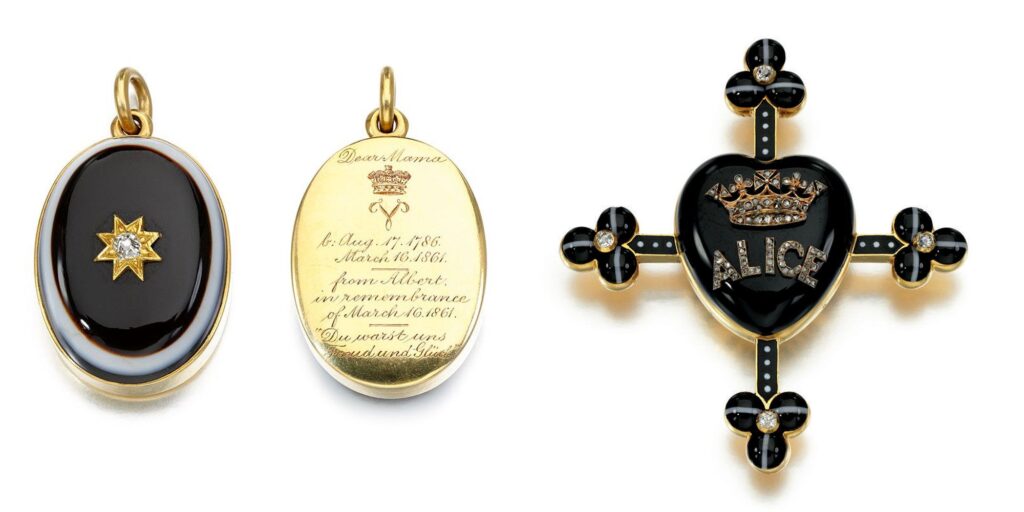
Queen Victoria’s mourning jewels. Gold, enamel, onyx, and diamond. © Sotheby’s for the auction of the Countess Mountbatten of Burma’s belongings (March 24, 2021)
In the Victorian era, mourning was an elaborate and highly ritualized practice which heavily influenced both the behavior and the appearance of the bereaved. Death was viewed as a common and constant part of life, and the elaborate customs surrounding death and mourning reflected the belief that death was not the end of life but rather a transition to the afterlife. At the same time, it served to respectfully mark the significance of the person’s passing, both by highlighting the value of that person’s existence and the emotional marks that they left on the people around them. One of the most tangible expressions of Victorian mourning practices was mourning attire. The bereaved would often dress entirely in black, for a length of time determined by their social status. Higher class individuals might dress in mourning attire for months, or even years. However, one aspect of mourning attire that never lost its significance was mourning jewelry, which could be worn for the rest of one’s life and passed down through generations.
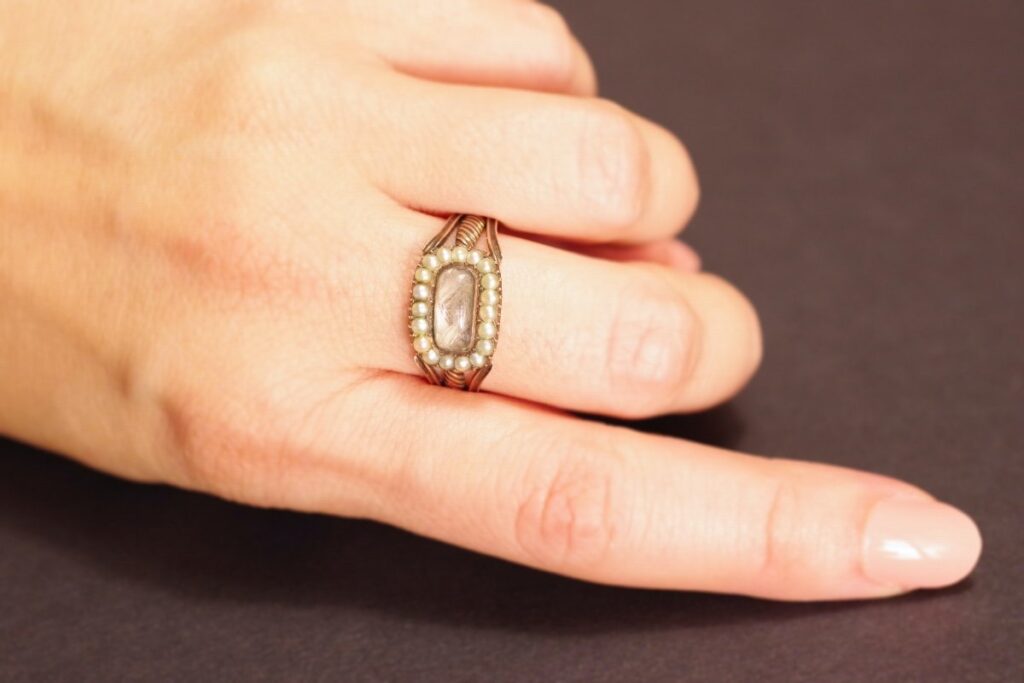
Georgian Mourning Ring. Gold, braided hair, pearl. Inscription on inside names Elizabeth, died 1810. © Maison Mohs
Queen Victoria’s Influence
Mourning jewelry was a popular form of Victorian jewelry that was created to commemorate the death of a loved one. As well as being a sign of respect for the deceased, it also granted a physical way for those left behind to hold their memory close. The practice of wearing mourning jewelry dates back centuries.
However, the practice became increasingly popular during the eighteenth century and reached its height under the reign of Queen Victoria of the United Kingdom (1820-1914). This was partly due to the Queen’s own example; after the devastating loss of her husband, Prince Albert, in 1861, Queen Victoria took to wearing black for the rest of her life. Her grief and deep devotion to preserving her husband’s memory inspired many of her subjects to follow suit. This led to the proliferation of mourning culture, including an increase in the appearance of mourning jewelry as a common way for people to express their grief.
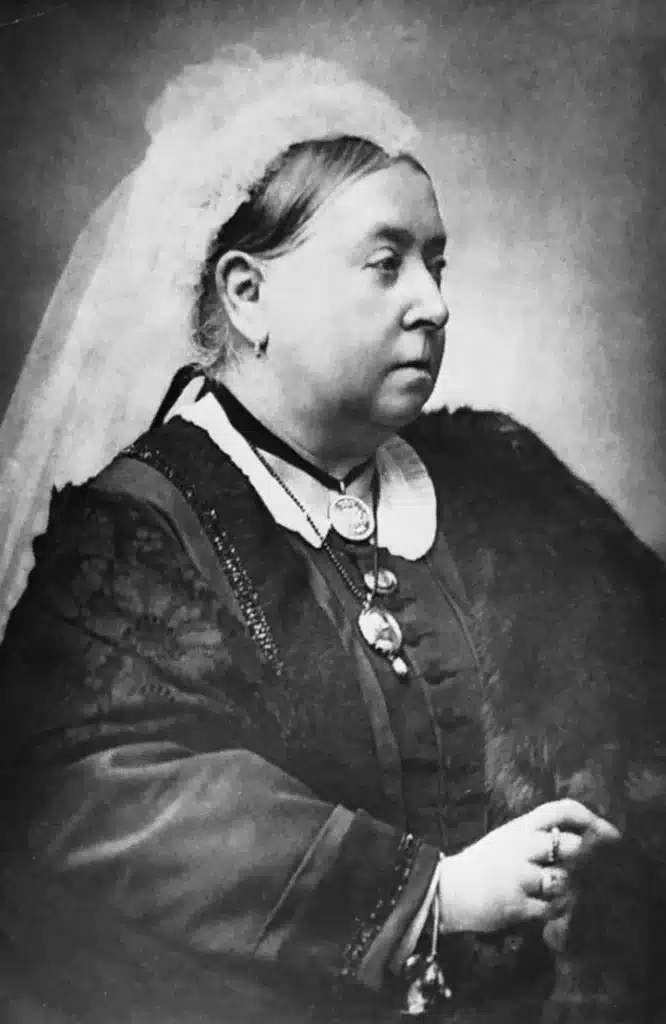
Portrait of Queen Victoria in mourning attire, taken after the death of her husband. © Encyclopædia Britannica – Widowhood of Victoria
Finding Beauty in the Macabre
While mourning jewelry could appear in many forms, these pieces were often made from materials like black jet, onyx, and vulcanite, which were popular for their somber, subdued appearance. These materials were used to make rings, lockets, watched, pins, hair ornaments, and other decorative pieces that could be worn close to the body. The items were typically cast in gold or gold-filled metals, although cheaper materials like brass could be used for less wealthy clients. Other popular materials used in the creation of mourning jewelry were pearls, human hair, teeth, and even small photographs of the deceased as such technology became more accessible. Human hair was a particularly popular addition, as it was a way to hold on to the deceased’s physical self. The hair was often braided into intricate designs, or even molded to create flowers or landscapes. Such designs were particularly popular as brooches, lockets, and rings.
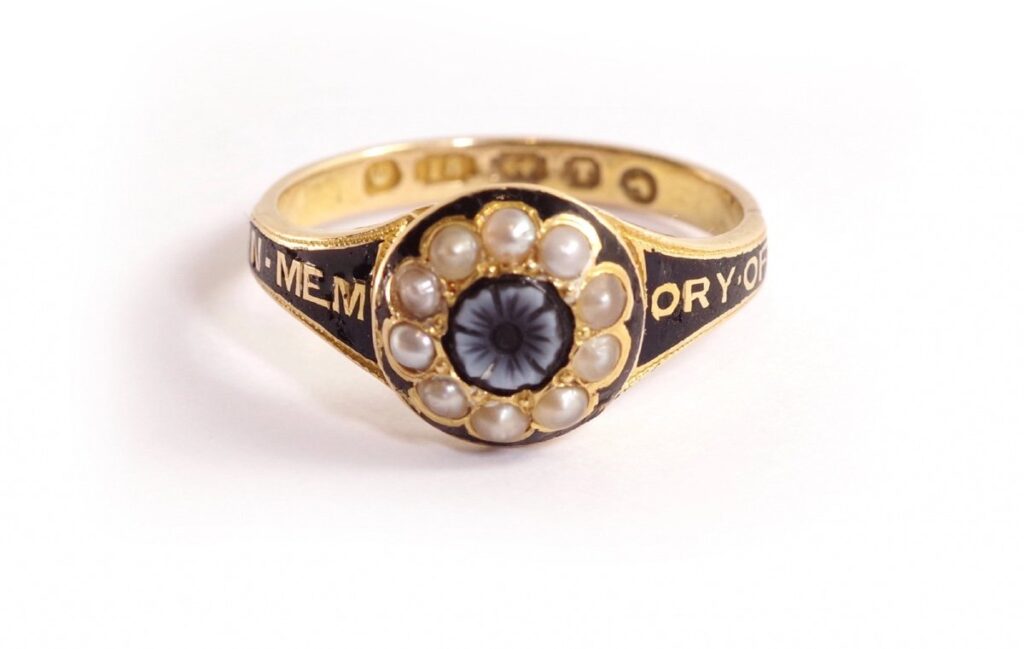
Victorian mourning flower ring. Gold, pearl, enamel, sardonyx. Shoulders of the ring read “in memory of.” England, 1865. © Maison Mohs
In Memoriam
Memorial rings were one of the most popular forms of morning jewelry as they were more subtle and could easily be worn by anyone regardless of gender or class. Memorial rings were often created for family members and close friends of the deceased, often featuring the name of the deceased and the date of their death. These rings were often inscribed with a sentimental message, such as “In memory of a dear wife,” or “Gone but not forgotten.”
In addition to be decorated by woven hair or black stones, such rings could also be decorated with other symbols of death such as skulls, crosses, and coffins, an artistic trope known as memento mori. These images served as a reminder of the inevitability of death, and to enjoy the time we have with those we love. While wearing such a constant reminder could be seen as quite depressing, it also could be seen as an expression of love and gratitude for the life we do have.
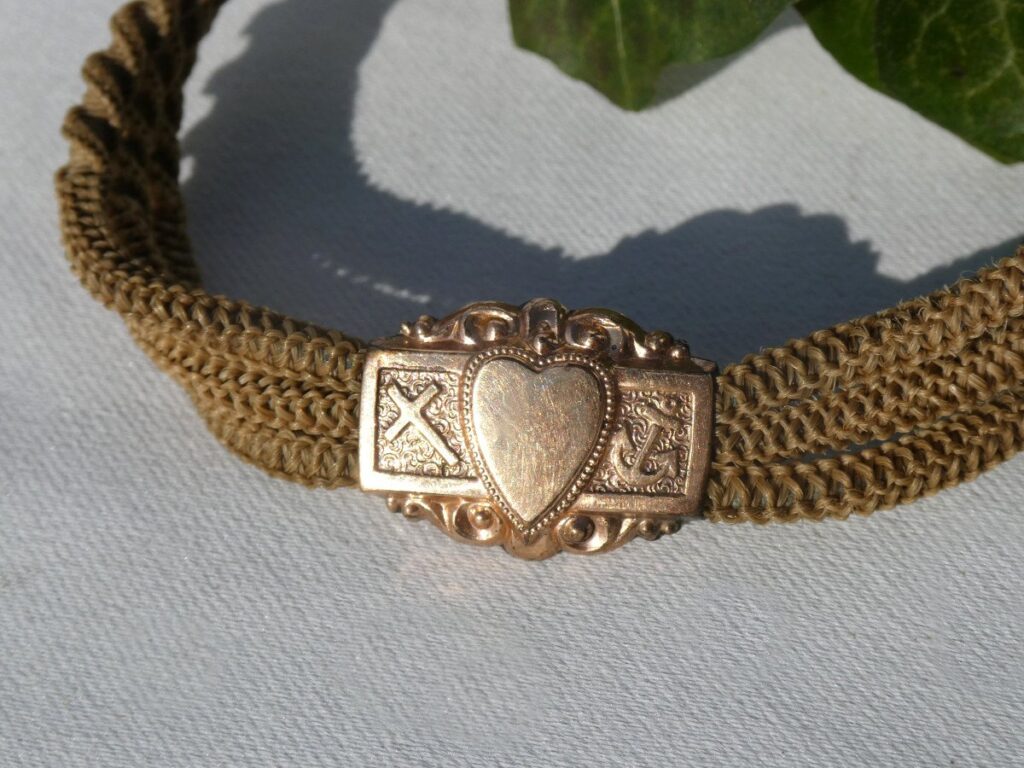
Mourning necklace of braided hair and gold. © Le Bûcher des Vanités
Made by Hand
Mourning jewelry was not just limited to the wealthy; it was also a common practice among the middle class. In fact, many people made their own mourning jewelry at home using materials like hair, ribbon, and beads. Instructions for creating mourning jewelry were often included in popular women’s magazines, such as Godey’s Lady’s Book and Peterson’s Magazine. Well preserved copies of these magazines reveal some of the popular designs and the methods of making mourning jewelry, as seen in the image below. While few extant examples of these homemade ornaments exist due to their more fragile nature, the varied levels of craftsmanship can be seen in some museums and private collections.
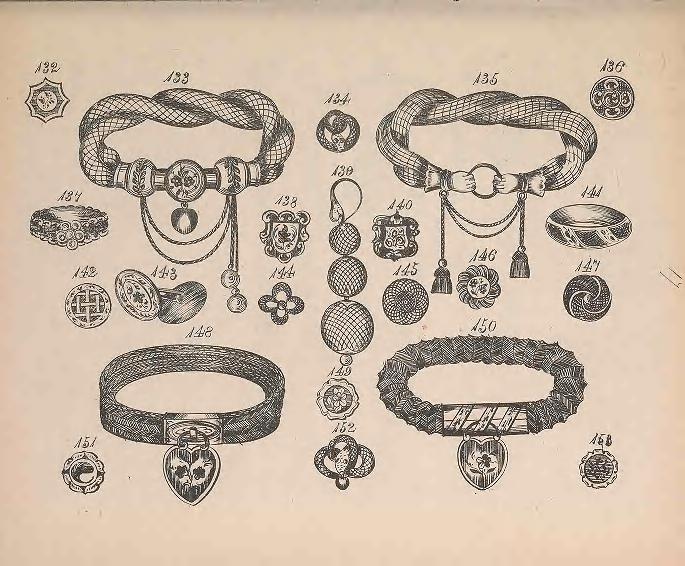
Designs for various hairwork accessories from The Jeweller’s Book of Patterns in Hair Work (London, 1864). CC Smithsonian Libraries
Close to the Heart
Despite its somber purpose, mourning jewelry was often quite beautiful. The intricate designs and delicate craftsmanship of mourning jewelry made it a highly sought-after commodity, and many pieces have survived to this day as cherished family heirlooms. While mourning jewelry could be quite costly to obtain, their value also greatly stemmed from their sentimental, historical, and familial significance. In addition to its sentimental value, mourning jewelry also served a practical purpose. In an era before photography was widely available, mourning jewelry provided a tangible reminder of the deceased. This was especially important for those who had lost loved ones who were buried far away, as mourning jewelry allowed them to carry a physical reminder of their loved one with them wherever they went. Even as photography began to become more widely available, it was often incorporated into mourning jewelry rather than outright replacing it.
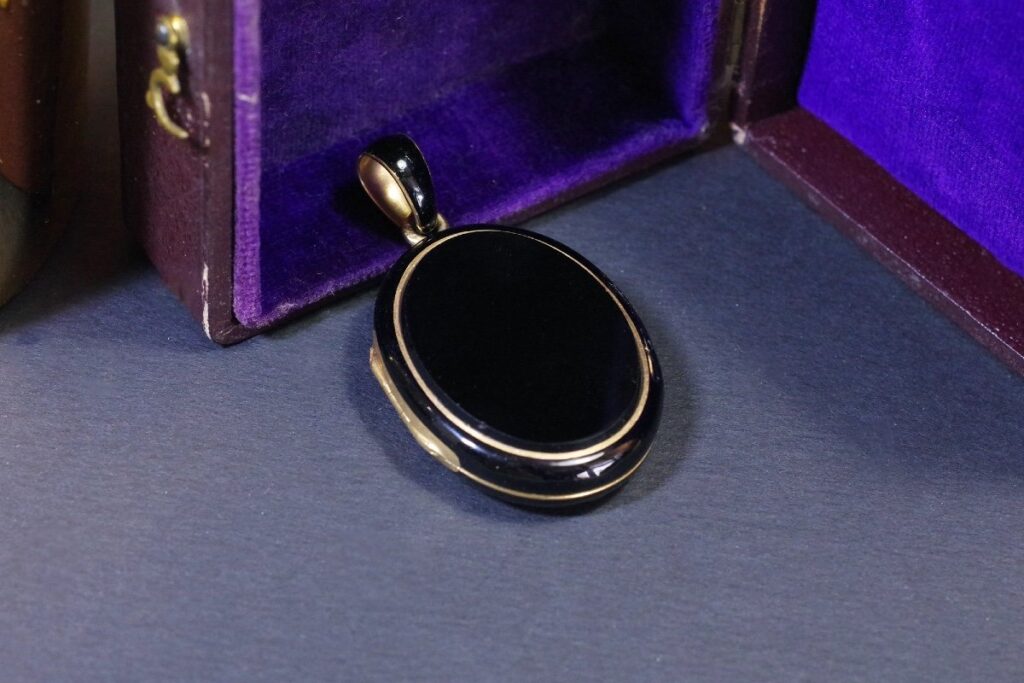
Antique mourning locket. Gold, onyx, and glass. Inscription reads “In memory of my excellent mother.” Dated September 26th, 1869. A photograph and lock of hair could be placed inside. © Maison Mohs
A Bygone Era
However, the use of mourning jewelry began to decline in the early 20th century as attitudes toward death and mourning began to change. The advent of photography and other forms of memorialization made mourning jewelry less necessary. It also became increasingly impractical as world wars and the global depression of the 1930s meant that there was more death and fewer resources to devote to memorializing it. Due to this increasing impracticality, the use of mourning jewelry eventually fell out of fashion. Today, mourning jewelry is mainly appreciated for its historical and sentimental value, as a reminder of a bygone era. These pieces have become highly collectable due to their historical significance, beauty, and macabre interest. They serve as a unique and poignant expression of the era’s attitudes toward death and mourning, and the surviving pieces provide a powerful reminder of the customs and traditions that defined the Victorian era and the deep emotions that accompanied the loss of a loved one.
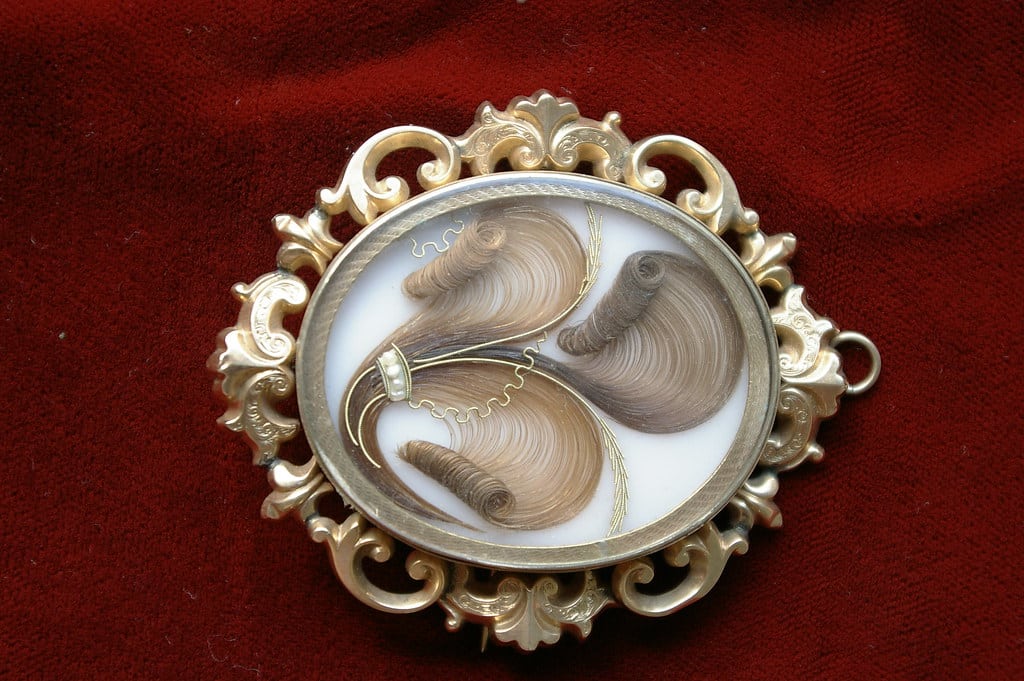
Mourning brooch. Gold, glass, and styled hair. CC Gordon McDowell
You May Like
Jewelry | English Jewelry | Victorian Style | Georgian Style




